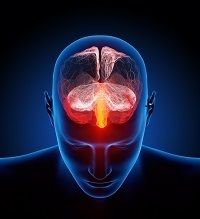Can Cognitive Behavioral Therapy Treat Chronic Headache?
A review in the British Journal of Pain examined some recent research testing the effectiveness of CBT in treating chronic headache and migraine.

Cognitive behavioral therapy (CBT) is an effective treatment for a number of psychiatric disorders. Recently, a number of clinical research studies have tested whether CBT might be effective for some pain conditions as well. A review in the British Journal of Pain examined some recent research testing the effectiveness of CBT in treating chronic headache and migraine in England.
The reviewers found some limited evidence indicating potential for the approach, but it also identified some methodological gaps in those studies that undermine some of that evidence.
Headache is notoriously difficult to diagnose and treat, in part because despite its pervasiveness, the etiology of headaches is not well understood. “While many headaches can be self-managed with simple analgesics, their efficacy tends to decrease with frequent use, and overuse can lead to more headaches,” the reviewers observed. “Other limitations of pharmacological therapies include the high cost associated with on-going medication, contraindications and medication intolerance.”
Thus, nonpharmacologic approaches that actually work would be a welcome addition to treatment protocols. Some of the interest around CBT stems from the fact that the anticipation of a headache can cause significant anxiety between episodes and that depression may be three times more common in individuals experiencing severe headaches or migraines than in headache-free individuals. While CBT has been shown to be effective in treating chronic pain, those reviews have specifically excluded its effect on headaches.
A literature search of eight electronic databases--including Embase, Ovid, and the Cochrane library--identified randomized clinical trials conducted from 1980, when CBT emerged as a treatment option, through 2013. “To aid interpretation of the results of these studies, we therefore focussed our review on physical reported outcomes of pain only, although we acknowledge that pain is not a purely physical experience,” the authors noted.
A total of 1126 titles and abstracts were screened and 1106 references excluded at title and abstract stage, from which 10 studies were reviewed. Of the 10 included studies, six employed mixed interventions, of which four studies combined some form of CBT with relaxation, one with biofeedback, and the remaining study with placebo.
One study allowed additional physical treatments such as pain medication, nerve blocks, acupuncture, massage and physical therapy for both the CBT and the wailing list control group. CBT was statistically significantly more effective in improving some headaches-related outcomes in CBT comparisons with waiting lists (three studies), in combination with relaxation compared with relaxation only (three studies) or antidepressant medication (one study), with no statistically significant differences in three studies.
“Results of the RCTs should be interpreted with caution as no high quality contemporary evidence was identified for CBT,” the researchers concluded. “Known methodological problems in this type of research include difficulties in blinding trials; the absence of standardization and detailed description of patient groups, interventions, delivery of interventions and outcome measures; the inclusion of self-selected patients and the use of waiting list control groups.”